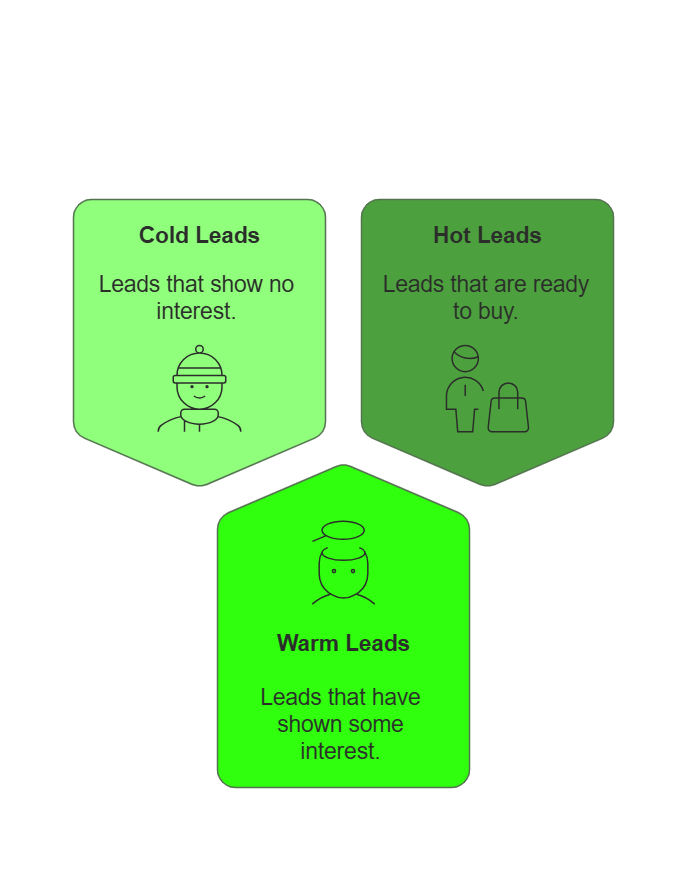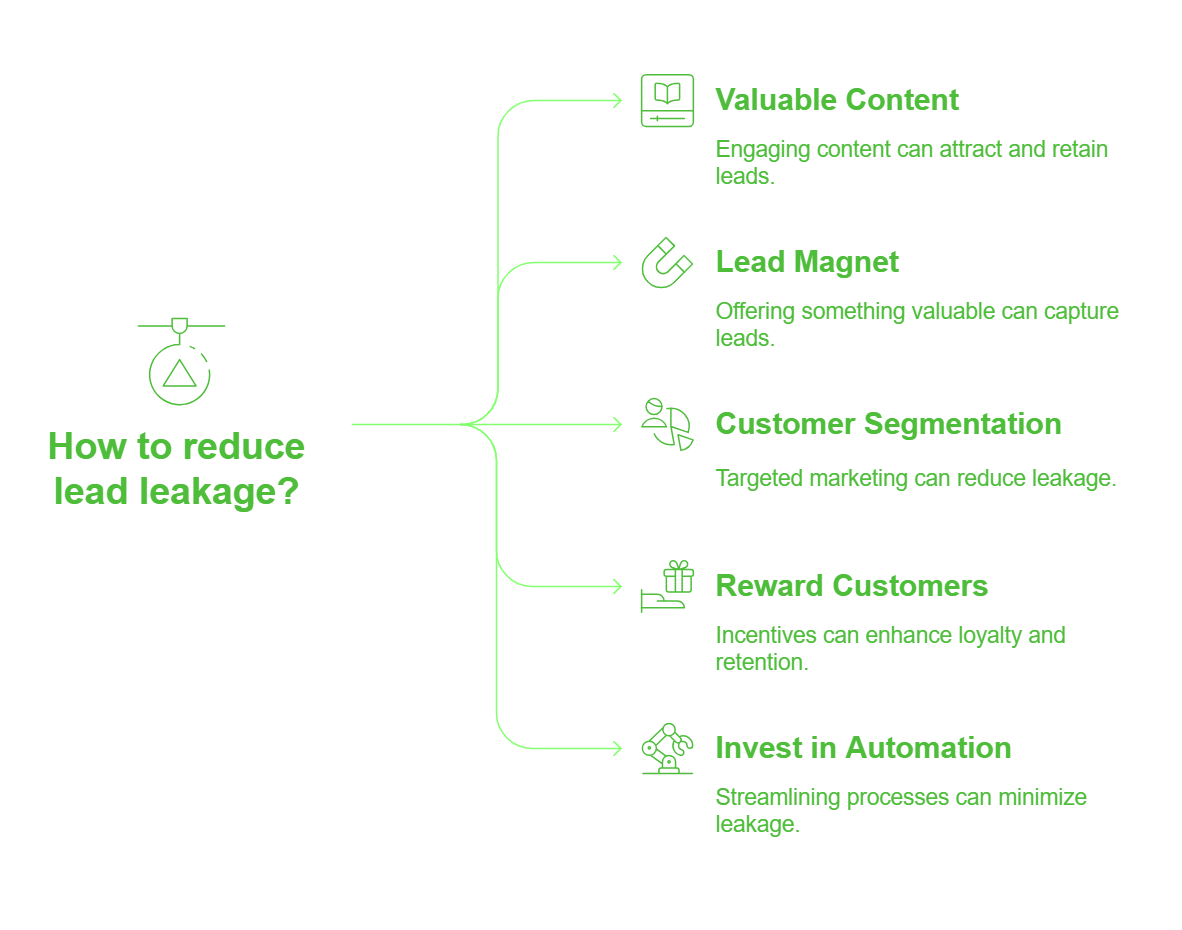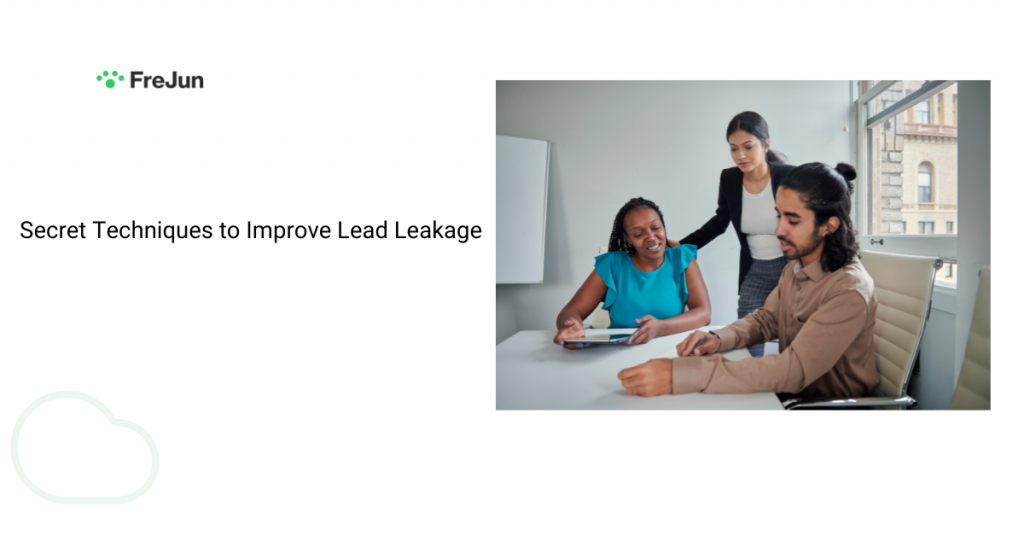Last updated on April 9th, 2025 at 03:40 pm
Lead leakage continues to be a major challenge for businesses, often leading to missed opportunities and reduced revenue. It occurs when potential leads slip through the cracks due to poor tracking, delayed follow-ups, or lack of proper engagement. In today’s competitive environment, this can significantly impact growth and profitability, especially when marketing and sales efforts fail to align effectively.
However, in 2025, businesses have access to advanced tools and data-driven approaches that make addressing lead leakage more efficient than ever. By leveraging CRM systems, automation, and AI-powered insights, companies can track and manage leads in real-time, ensuring timely follow-ups and personalized communication. These modern strategies help businesses nurture leads more effectively and improve their chances of conversion, ultimately maximizing return on investment.
In this post, we are going to dive deep and understand everything about a popular challenge faced by most marketers, salespeople, and businesses – lead leakage.
What Are Effective Ways to Minimize Lead Leakage in Business Communication?
Minimizing lead leakage requires prompt follow-ups, integrated CRM systems, real-time call tracking, and automation tools. Platforms like FreJun help businesses capture, route, and nurture leads effectively by using voicebots, call intelligence, and seamless CRM integration ensuring no lead goes unnoticed or untracked.
What is Lead Leakage?
Lead leakage is the loss of leads as they progress through the different stages of a sales funnel. This happens mainly because sales reps and marketers spend too much time on lead generation and ignore nurturing the existing leads. They forget that it is important to guide the lead down through each step of the funnel and ensure that they cross the finish line called ‘conversion’.
In other words, you must nurture the leads till you close the deal; otherwise, there are high chances of you losing them. Interestingly, the wider your sales funnel is, the more challenging it is to plug the lead leakage. Again lead leakage is not something to be taken lightly, as it can cost you a lot of money and resources.
Hidden Causes of Lead Leakage
| Cause | Impact on Lead Loss |
| Slow Response Time | Leads lose interest when responses take too long. |
| Unqualified Leads | Sales reps waste time on low-converting prospects. |
| Lack of Follow-Up | Many leads drop off due to inconsistent engagement. |
| Ineffective Lead Routing | Leads land in the wrong department, delaying conversion. |
| Poor CRM Utilization | Disorganized lead tracking results in lost opportunities. |
Types of Leads that Leak

There are typically three types of leads that can pass through the leak. They are –
1. Cold Leads
As you would have guessed, these are the leads who have no idea about you, haven’t heard from you before, and do not have any initial intention to purchase from you. These kinds of leads will get alarmed if you push them too much during the initial cold calls. Unless you deliver them value and useful materials, they will move out of your funnel in the initial stages itself. The best way to tackle such leads is by waiting for them to mature and make a purchase decision.
2. Warm Leads
These leads know about you, have heard from you before, and have the intention to purchase your product. But they are not in a hurry and need an additional push to convert them into customers. So unless you give that external stimulus and create a sense of FOMO in their minds, you are going to lose warm leads in your sales funnel.
3. Hot Leads
This might come as a surprise. After all, why will someone who has already decided to purchase from you get out of the funnel? It could definitely happen either because you didn’t qualify them as hot or your salespeople failed to follow up, resulting in them switching to your competitors.
How to Minimise Lead Leakage

Common Causes of Lead Leakage
Let us now look at the top reasons why lead leakage happens in the first place –
1. Failing to Qualify Your Leads
This is probably the biggest mistake that most marketers make. They spend a lot of time dealing with leads that still haven’t entered the funnel yet. Remember – these are the people who haven’t decided to buy the product yet. They are just staying to read more of your content. Such unqualified leads should never be allowed to pass through the funnel or transferred to the sales team. It’s nothing but a big waste of time for all, and there are very high chances that they will leak through the funnel. Instead, you must use lead scoring to qualify and rank the leads based on their readiness to buy.
2. Failing to Nurture the Leads
To the unversed, lead nurturing is the act of building relationships with prospects over a period of time by following up regularly and constantly delivering them value. Think of it as a strategy to stay on top of the minds of the reps, even if they are not ready to buy right away. When you fail to nurture the leads, you fail to engage the leads. And an unengaged lead is the first one to move out of your funnel. So make sure that you have a solid lead nurturing plan that takes into consideration every stage of your funnel along with the tasks you need to perform as part of the nurturing process.
3. Failing to Identify a Lead Who Isn’t Ready
Agreed, lead nurturing is important, but that doesn’t mean you keep badgering them, especially when they are not READY. Yes, you must know who is ready to purchase now and who isn’t. Many good leads drop off when they find you highly pushy and pestering. As a marketer and rep, your job is to find the stage where your lead is at, offer the necessary information, and follow-up at the right frequency. When they are ready to purchase from you, they will take the necessary action and purchase from you.
Techniques to Improve Lead Leakage

Let us now go through some handy tips that you can employ to eliminate unwanted lead leakage in your sales pipeline.
Technique 1 – Create Valuable Content
Most businesses wrongly assume that creating content is important only for attracting new customers or engaging existing ones. They fail to realize that good content is even more important to convince a lead to become a customer. But it is critical that you tailor the content to the precise needs of the lead. A one size fits all content is not going to work during lead nurturing and may even result in leads dropping out of the funnel due to unwanted information thrown at them.
Technique 2 – Create a Valuable Lead Magnet
A lead magnet is a free item or a service that’s given away in return for contact details. Most businesses make the mistake of picking a lead magnet that’s not selling well or no longer offers the necessary value to the leads. This is a big blunder as most of your leads would have already performed research and know what is valuable and what isn’t to them. They will leave you in no time once they realize that you are just offering them a piece of unwanted product or service.
Do a lot of research and find out what your competitors are offering as a lead magnet. See if there are any gaps that are not being met by your competitors and fulfill them for your users through your lead magnet. Most importantly, measure how the lead magnets are performing against your short and long-term targets.
Technique 3 – Perform Customer Segmentation
Think of customer segmentation as a prerequisite for the lead nurturing process. You need to divide your target audience into small factions according to their demographics, engagement, product knowledge, interest, and propensity to buy. This will help in tailoring the experience for all the users, which, in turn, can result in better engagement. A highly engaged lead will travel throughout the funnel and might even cross the boundary and become your loyal customer. Most importantly, there will be no more lead leakage in your funnel.
Technique 4 – Reward Existing Customers
Many businesses fail to connect existing customers with lead leakages. After all, what role do they have in the prevention of leads dropping out? The answer to this question is referrals. Yes, referrals are rightly called marketing gold because they are the highest quality leads. Referrals know about your brand; they trust your brand and have a high intention to purchase. In other words, the chances of them leaking through the funnel are low. So do not think that your job as a sales rep or marketer is over after conversion.
This will make the customers feel valued and increase the chance of them talking about your business to their friends and relatives.
Technique 5 – Invest in Automation
Even today, you can find businesses relying on plain old Excel sheets to manage their lead details. Excel is good, but it has its limitations. When it comes to lead management, it’s all about automation and the ability to scale, which is not possible with Excel. A Customer Relationship Management tool automates most of the tasks related to lead management, including lead storage and lead distribution.
Similarly, many businesses do not invest in a cloud telephony tool despite the numerous layers of automation it offers. Right from scheduling calls to automatic dialing, a cloud telephony tool offers everything your reps need to streamline the calling process with potential leads. FreJun is the number 1 cloud telephony software and is used by businesses of all sizes to automate their calling strategy.
Now, you might wonder, what’s the connection between tools like CRM/cloud telephony platforms and lead leakage? It’s simple. When you do not embrace CRM or cloud telephony, mistakes are bound to happen, and a lot of manual effort is going to be required from your reps. Your reps are going to waste a lot of time storing, retrieving lead information, and dialing numbers manually, instead of spending that time on nurturing the leads and preventing unwanted leakage.
Tips to Prevent Lead Leakage
These are the tips for 2025:
1. AI-Powered Chatbots
Use chatbots to engage leads instantly and collect information.
2. Social Listening Tools
Monitor social media channels for potential leads and engage with them proactively.
3. Predictive Lead Scoring
Utilize AI to rank leads based on their likelihood of conversion, helping your team prioritize effectively.
Conclusion
Improving lead leakage is essential for maximizing your sales and marketing efforts in 2025. By leveraging advanced tools, streamlining workflows, and enhancing engagement, you can ensure that no potential customer slips through the cracks. Start implementing these techniques today to secure more conversions and drive business growth! Lead leakage is one of the biggest challenges in sales and marketing. It can break or make organizations as it can not only result in lost opportunities but also impact the business’s revenue. Follow the techniques highlighted in this post for proper lead management and lead leakage prevention.
Further Reading: Tips to Master Sales Calling using Hubspot
Frequently Asked Questions
Missed or unattended calls often mean lost opportunities. FreJun automatically logs missed calls and can trigger instant follow-ups via voicebots or SMS.
A well-integrated CRM ensures all lead information is recorded and actionable. FreJun syncs call data directly with your CRM to avoid manual errors and data gaps.
Call tracking helps identify which marketing channels generate leads and ensures follow-up. FreJun provides detailed call analytics and source tracking.
Real-time alerts notify sales teams of new leads instantly, reducing response delays. FreJun enables instant lead alerts via email, SMS, or integrated tools.
IVR systems direct leads to the right department, preventing drop-offs. FreJun allows custom IVR flows to streamline lead routing.
Delayed follow-ups cause leads to lose interest or choose competitors. FreJun automates follow-up sequences to ensure timely engagement and better conversions.
Absolutely. Call recordings help in verifying lead conversations and improving agent response. FreJun stores and categorizes these recordings for easy review.
